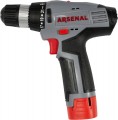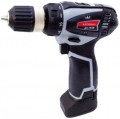Torque
Torque is the maximum force with which this model is capable of turning the working nozzle.
Higher torque gives more options, it allows you to cope with complex tasks such as drilling in hard materials, unscrewing stuck screws and nuts, etc. On the other hand, a lot of force requires corresponding power — and this, in turn, affects the dimensions , weight and cost of the tool itself, and also puts forward increased power requirements (mains power, battery capacity or pressure / compressor performance). And for some tasks, excessive torque is basically unacceptable, so for maximum versatility, it is desirable to have
torque control — and this affects the cost even more. And the more steps, the more optimally you can configure the tool to perform a particular type of work. So the general rule is this: when choosing, it is worth considering the specifics of the planned work, and not chasing the greatest working effort.
Detailed recommendations on choosing the optimal torque for different types of tools (see "Device") can be found in special sources. Here we note that it is of key importance primarily for screwdrivers, although it is also given for other types of tools. At the same time, in the “weakest” models, the maximum working force does not exceed 15 Nm, in the most powerful ones it is more than 150 Nm.
Wood drilling max. ⌀
The largest diameter of holes that the tool can make when drilling with a conventional drill in wood.
The larger the hole diameter, the higher the resistance of the material, the more power the tool must provide and the higher the load on it. Therefore, the maximum allowable drilling diameter must not be exceeded, even if the chuck allows you to install a thicker drill bit — this can lead to tool breakage and even injury to others.
It is worth noting that some types of wood can have a fairly high density, and for them the actual allowable drill diameter will be, accordingly, less than the claimed one. However, this is true mainly for exotic breeds, which are extremely rare in our area.
Metal drilling max. ⌀
The largest diameter of holes that the tool is capable of making when drilling with a conventional drill in metal.
The larger the hole diameter, the higher the resistance of the material, the more power the tool must provide and the higher the load on it. Therefore, the maximum allowable drilling diameter must not be exceeded, even if the chuck allows you to install a thicker drill bit — this can lead to tool breakage and even injury to others.
Also note that the drilling diameter for metal is usually indicated based on medium hard steel and other similar materials. For metals and alloys that have a significantly higher hardness and density, the allowable drill thickness will be less; however, such situations occur infrequently, and if you wish, you can find out about the features of working with various alloys x in special sources.
Battery voltage
Rated battery voltage for which the cordless tool is designed (see "Power Source").
Manufacturers select the battery voltage taking into account the performance characteristics of the tool and the power supply required to achieve these characteristics. In fact, this means that most often this parameter can be ignored at all when choosing. The only exceptions are some specific situations — for example, if the "household" already has a battery of the same company and you want to evaluate its compatibility with the selected model, if the selected tool is supplied without a battery and you want to immediately order a power source for it, or for accurate comparison of batteries by capacity (see below for more details). But after the purchase, the voltage data can also be useful for finding chargers in addition to or to replace the "native" charger.
As for specific values, in many models the voltage
does not exceed 10 V — this is often quite enough. However, much more popular options are
11 to 15 V and
16 to 20 V. There are also
higher voltages, but much less frequently.
Charging time
The time to fully charge the battery that the tool is equipped with from a standard charger (when using other batteries or a “non-native” charger, this time may vary both in one direction and in the other).
For cordless tools in general, see "Power Source". And charging time data gives you an idea of how you'll need to organize your workflow and how long breaks you'll need to charge your batteries. The specific duration of the process will depend both on the capacity of the battery (ceteris paribus, a more capacious model takes longer to charge), and on the technologies used by the manufacturer that increase charging efficiency. However, in general, it is customary to refer to tools with
a good charging speed as models where this procedure takes no more than 45 minutes.
We also note that the specific meaning of this parameter also depends on the number of batteries in the kit. Recall that there are often several of them at once (see "Complete battery"), and while one battery is working, the rest can be charged. This allows you to reduce interruptions to a minimum, and even completely do without them. But if there is only one battery, charging breaks will inevitably be required in full. This is especially true for tools with a built-in power source (in models with replaceable batteries, the situation can be corrected by purchasing additional batteries).

